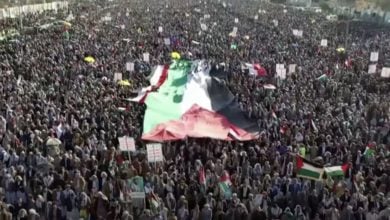President Biden and Iraqi Prime Minister Mustafa al-Kadhimi announced July 26 that combat operations by U.S. troops in Iraq would cease by the end of the year. The Biden administration did not state how many troops will be left at the year’s end. 2,500 U.S. soldiers are currently in the country despite widespread opposition among the Iraqi public and a resolution passed last year by the Iraqi parliament demanding a withdrawal.
Questions remain about the details of this agreement, including to what extent it will actually end U.S. involvement in the country. Prime Minister Kadhimi told reporters that his country no longer needs combat troops, but that he plans to continue to work with the United States for training and intelligence gathering to combat ISIS. Critics of the U.S. troop presence dispute their importance in the fight against ISIS and point out that the 2003 U.S. invasion set the stage for its rise in the first place. The definition of a “combat” or “non-combat” operation could also be stretched by the Pentagon in order to continue carrying out aggressive activities.
It is also an open question as to whether or not the agreement affects the status of U.S.-aligned mercenaries — so-called “private military contractors” — deployed in the country. These forces have committed notorious atrocities in Iraq, including the 2007 Nisour Square massacre that took the lives of 17 Iraqi civilians.
The U.S. government has inflicted unspeakable suffering on the Iraqi people for the last 30 years straight. From the 1991 Gulf War to the suffocating sanctions regime in the 1990s that killed hundreds of thousands, to the catastrophic 2003 invasion, to the military operations of today, the United States has been constantly waging war on the country. To pacify Iraq following the 2003 invasion, the U.S. installed an explicitly sectarian political system that inflamed tensions and led to devastating civil war. In this moment of crisis and occupation, al-Qaeda became a force in Iraq, which went on to become ISIS.
In 2011, President Obama announced a full withdrawal of troops from Iraq after negotiations with the Iraqi government fell apart over the issue of whether or not U.S. troops would be granted legal immunity for crimes they may commit. However, the Obama administration re-deployed troops in 2014 after ISIS took over a major section of the country. ISIS’ meteoric rise across the region was made possible by the chaos brought about by the U.S.-instigated Syrian War. At this time U.S. troops were also illegally deployed to Syria against the wishes of the country’s sovereign government.
Biden and al-Kahdimi’s announcement comes on the heels of the United States’ imminent withdrawal from Afghanistan after 20 years. Like in Afghanistan, U.S. forces faced constant resistance from fighters opposed to the foreign occupation of their country. Steady rocket and drone strikes on U.S. military and political installations in recent months has maintained pressure on the United States. Also contributing to the pressure, the U.S. public has developed an increasingly unfavorable opinion towards the “war on terror”-era forever wars. But the U.S. occupation will not truly be over until all troops, regardless of their role, leave the country.






